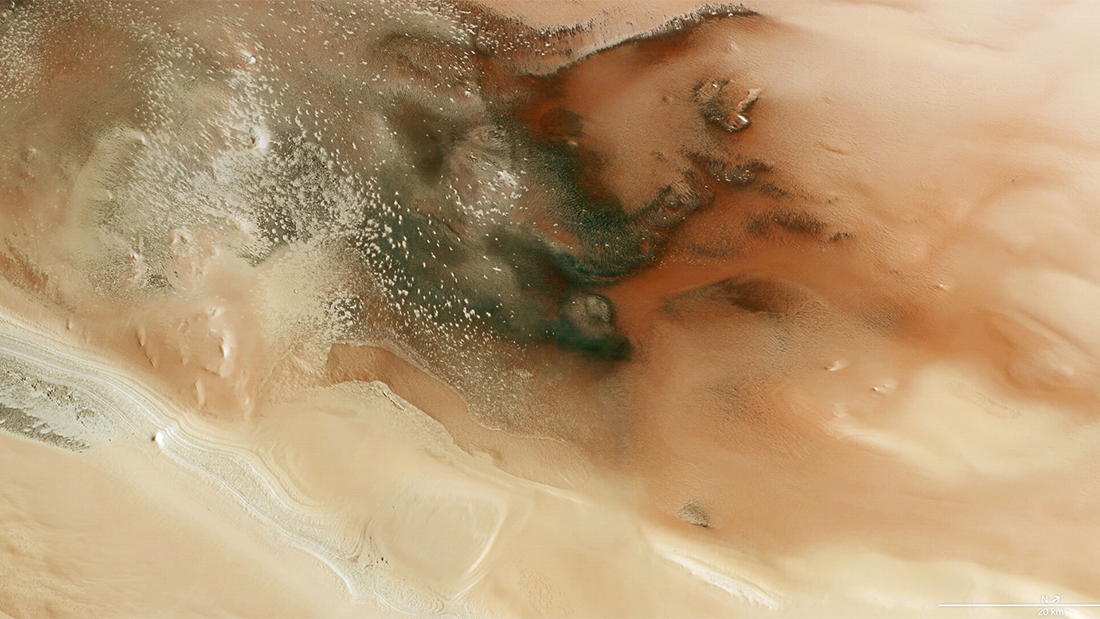The European Space Agency’s (ESA’s) Mars Express has sent back new images of the south polar region of Mars, capturing features known as “cryptic terrain” emerging from beneath the Martian frost.
The terrain at the Martian poles is covered in a mixture comprising mainly carbon dioxide ice, with some water ice mixed in there. In autumn, as the planet cools, these gases around the polar caps condense, creating more ice. During the Martian winter, this grows the ice caps significantly.
“By late winter they may even reach as far as 55 degrees latitude – roughly the equivalent of Scotland and Denmark’s southern reaches if translated to the northern hemisphere of Earth,” ESA explained in a blog post.
In spring, the carbon dioxide ice does not melt but sublimates, turning straight back to a gas without any intermediate liquid phase, and so the cycle continues.
When we first began imaging Mars, we saw some unusual features. One of these was simply dubbed “cryptic terrain” essentially because it defied explanation at the time. These features are areas of noticeably darker terrain, which really stand out against the rest of the Martian ice caps.
The dark patches are what we now call “cryptic terrain”.
Image credit: ESA/DLR/FU Berlin
While the features were baffling at first, scientists came up with a number of hypotheses, and now we have a pretty good idea of how they formed.
“When sunlight penetrates through the translucent carbon dioxide ice layer in early spring it warms up the underlying surface,” ESA explains. “The ice at the bottom of the layer begins to sublimate, creating pockets of trapped gas. The pressure builds up and the overlying ice suddenly cracks. Jets of gas burst through the surface, carrying dark dust from below. The dust falls back to the surface in a pattern shaped by the direction of the prevailing wind.”
This is a similar mechanism to how scientists believe that the famous “spiders on Mars” features likely formed, and indeed these “spiders” are only found within the same region of the Red Planet (at least, as far as we know from images).
Cryptic terrain during the winter months
Image credit: ESA/DLR/FU Berlin
Once the dust has settled, the darker patches absorb more light and begin to heat up, slowly sinking their way through the ice and creating a hole.
“Either fresh ice is revealed underneath, or new frost may then condense on top of the sinking dark grains, resulting in a bright fan at the place of the initially dark fan,” the ESA adds.
This mechanism is similar to the one proposed for the spiders on Mars, which was recently lent experimental evidence in its favor.
“In this model, sunlight penetrates translucent slab ice in spring and thermal-wavelength radiation gets trapped, heating the regolith beneath the ice and causing the impermeable ice slab to sublimate from its base,” a team investigating the phenomenon explained in their study.
“Through this process, spiders are proposed to be eroded via high-velocity gas scouring the sub-slab regolith, while fans and variations of spots are strewn on the ice surface, deposited by a plume of dust and gas.”
Source Link: Mars Express Sends Back Stunning Images Of The "Cryptic Terrain" On Mars
